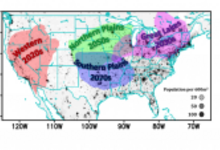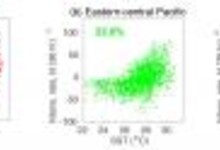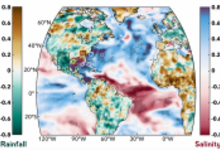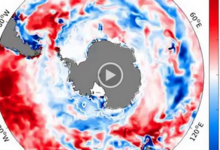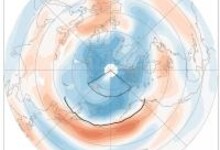Research Highlights
We aim to feature the latest research results from US scientists whose published paper features work that is sponsored by one or more sponsoring agency programs of US CLIVAR (NASA, NOAA, NSF, DOE, ONR). Check out the collection of research highlights below and sort by topic on the right. Interested in submitting an article for consideration? See our Research Highlight Submission Guidelines page for more information.
Climate change will drive more frequent and extreme summer heat waves in the western US by late the 2020s, the Great Lakes region by the mid-2030s, and in the northern and southern Plains by the 2050s and 2070s, respectively.
Research shows that SST may explain a significantly smaller percentage of the variance in tropical cyclone intensification in the Atlantic as compared to the western North Pacific and eastern-central Pacific.
Researchers show that weakened surface ocean circulation coincides with precipitation during the Little Ice Age and is consistent with little-to-no changes in the larger Atlantic meridional overturning circulation.
To better understand climate variability and the Southern Ocean, researchers estimate spatial correlations of ocean properties to reveal how many observing platforms are necessary to adequately observe carbon and heat.
New research shows that regional Arctic temperature swings can influence jet stream positions and speeds but only account for a small fraction of the jet variations, implying other factors are crucial for predicting jet stream behavior.

